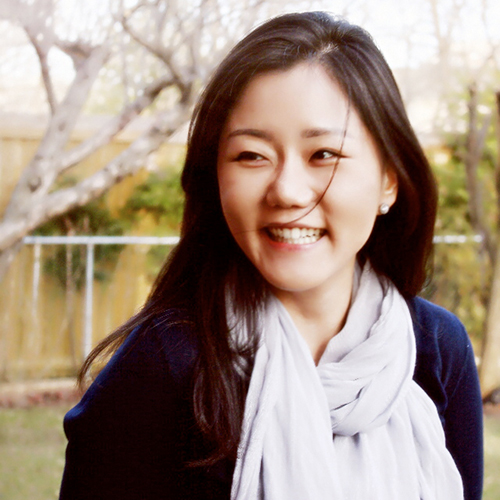 Before teaching in Mongolia and studying at Harvard, Ju-Hye Ahn was in the Artist in Community Education (ACE) program at Queen’s. ACE, which brings together artists who work in disparate media such as poetry, theatre and music, changed the way Ju-Hye regarded the function of art.
Before teaching in Mongolia and studying at Harvard, Ju-Hye Ahn was in the Artist in Community Education (ACE) program at Queen’s. ACE, which brings together artists who work in disparate media such as poetry, theatre and music, changed the way Ju-Hye regarded the function of art.
“I came to realize that art wasn’t just about making something beautiful to look at,” she says. “To be effective and truly worthwhile it has to be socially engaging and provide a means of looking critically at the world.”
A lifetime creator of visual art, Ju-Hye auditioned and was accepted into an arts-specific program at Earl Haig Secondary School in Toronto before coming to Queen’s in 2003 to do her BFA. While specializing in printmaking, she learnt about the ACE program from Stephen Elliott, Dean of Education, himself a graduate of ACE.
“It was fantastic getting to work with other artists, especially in such a non-traditional way. Rather than treating us as students or teachers, the program allowed us to take on both roles,” says Ju-Hye.
After graduation, Ju-Hye taught for two years in Toronto before deciding to teach abroad. Ending up at the American School of Ulaanbaatar in Mongolia, she remained interested in community work and so volunteered at a local community centre as well. Working with low income students in Mongolia strengthened Ju-Hye’s interest in social justice and returned her to her studies.
Enrolled in a Master’s of Education program at Harvard, Ju-Hye wanted to learn more about how government policy can lead to changes in teaching practice. “Many of my courses focused on the ethical aspects of education and defining what good work in education looks like. Along with being ethical, it is essential that education be engaging to students — something I want to develop.”
With audience engagement in mind, Ju-Hye began an internship at the Sackler Museum at Harvard. Here she worked on projects that made the museum more accessible and sought to bring in more people who wouldn’t typically visit.
“Art galleries and museums usually have a single voice telling you what to think and what’s important but I think they’re most effective as learning spaces when they’re more participatory and that means allowing visitors to pose their own questions,” she says.
"When people are able to ask good questions they’re more interested, engaged and the museum is more successful."
Back in Toronto, Ju-Hye has moved to the Ontario College of Art and Design University where she works at the professional gallery. With the program Onsite at OCAD U, she assists the gallery’s curator with community outreach, planning, programming workshops and attracting diverse groups of people.
A perpetual learner, Ju-Hye is heading back to school this September to pursue her Ph.D. in Curriculum Studies at the University of Toronto. “I want to encourage a stronger artist presence in the classroom,” she says. “I think education is too focused on the past, with students learning about master painters and being encouraged to emulate that. It requires a tremendous amount of skill and talent that isn’t available to most students and so they become disenchanted with art. I want young people in school learning that they can create good art that generates discussion about identity, integration and other social issues. They need to learn more about the force that art can have.”
Article originally appeared on the Queen's Alumni Review website.